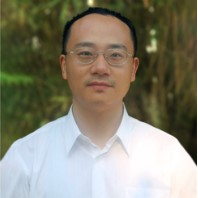Mechanobiology and Cell Mechanics in Biology and Diseases
A special issue of Bioengineering (ISSN 2306-5354). This special issue belongs to the section "Regenerative Engineering".
Deadline for manuscript submissions: closed (31 March 2024) | Viewed by 1440
Special Issue Editors
Interests: mechanobiology; mechano-oncology; tumor metastasis; cell mechanics; cancer stem cell
Special Issues, Collections and Topics in MDPI journals
Interests: biophysics and mechanobiology in cancer development and metastasis, cardiovascular system, and brain; all-optical mechano-electrophysiology; functional imaging in vivo; optogenetics; bio-nanotechnology; genome editing
Interests: regenerative medicine; mechanobiology; cartilage tissue engineering; stem cells; osteoarthritis
Special Issue Information
Dear Colleagues,
Mechanobiology is an emerging cross-disciplinary area, which analyses the understanding of how mechanical forces influence the functions and structures of biological systems at molecular, cellular, tissue, and body levels. In recent years, there has been a rapid accumulation of evidence surrounding the development of innovative strategies against diseases by targeting mechanical factors and the significance of mechanical signals and cell mechanics in various physiologic and pathologic processes.
This Special Issue on “Mechanobiology and cell mechanics in biology and diseases” focuses on the developments in both fundamental research and engineering methodologies that advance the field of mechanobiology in original research articles and comprehensive reviews. This Special Issue will include, among others, the following topics of interest:
- Mechanical characterization of molecules, cells, and tissues in diseases;
- Mechanical and biophysical regulation of physiologic and pathologic processes;
- Mechanosensing and mechanotransduction at molecular-to-tissue scales;
- Multiscale theoretical modeling for the causal understanding of mechanical forces in biology;
- Innovative clinical therapeutic strategies by targeting mechanical cues and mechanotransduction;
- Advanced engineering tools for measuring/applying mechanical forces in biological systems;
Dr. Youhua Tan
Dr. Tang Xin
Prof. Dr. Mikko J. Lammi
Dr. Anand Ramasubramanian
Guest Editors
Manuscript Submission Information
Manuscripts should be submitted online at www.mdpi.com by registering and logging in to this website. Once you are registered, click here to go to the submission form. Manuscripts can be submitted until the deadline. All submissions that pass pre-check are peer-reviewed. Accepted papers will be published continuously in the journal (as soon as accepted) and will be listed together on the special issue website. Research articles, review articles as well as short communications are invited. For planned papers, a title and short abstract (about 100 words) can be sent to the Editorial Office for announcement on this website.
Submitted manuscripts should not have been published previously, nor be under consideration for publication elsewhere (except conference proceedings papers). All manuscripts are thoroughly refereed through a single-blind peer-review process. A guide for authors and other relevant information for submission of manuscripts is available on the Instructions for Authors page. Bioengineering is an international peer-reviewed open access monthly journal published by MDPI.
Please visit the Instructions for Authors page before submitting a manuscript. The Article Processing Charge (APC) for publication in this open access journal is 2700 CHF (Swiss Francs). Submitted papers should be well formatted and use good English. Authors may use MDPI's English editing service prior to publication or during author revisions.
Keywords
- mechanobiology
- mechanotransduction
- cell mechanics
- biophysics
- mechanomedicine
- mechanical forces
- mechanotargeting
- mechano-therapeutics









